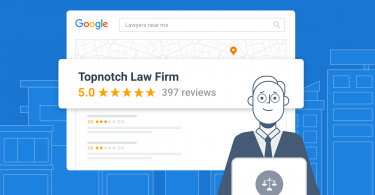Your business website is the most important digital touchpoint for your online customers. Before making an online booking, customers are more likely to visit your business website and evaluate your credibility.
According to the Nielsen Norman Group, most visitors spend less than 59 seconds on a website. Within these few seconds, customers usually make up their mind if they should book a service with you or not. If you fail to catch their attention during these intent-driven seconds, you’ll end up losing customers.
While you might be getting a good amount of direct traffic on your website, the real question is – Are those visitors converting into customers?
To help you tie up the loose ends, we’ve put together an 8-point checklist that will help you get more online bookings on your website.
#1 Strategically placed CTAs
Whenever a customer visits your website, you would want them to take some action. The goal of each page on your website should be defined and you should include your CTAs accordingly. What do you want your visitors to do right after they land up on your website? Whether you want them to book a service, read your blog or redirect them to your social media pages, you must have a specific call-to-action button in place. A thoughtfully placed CTA button will catch the attention of website visitors and prompt them to take the desired action.
#2 Mobile-optimized website
Nowadays, customers are constantly searching for products and services on mobile. It’s important to focus on mobile as the average smartphone conversion rates are 64% more as compared to desktop conversion rates. Mobile searches are highly intent-driven, and your business can leverage this aspect by having a mobile-friendly website.
While searching for a business or service, customers expect a seamless mobile web experience. 57% of customers won’t recommend a business with a poorly designed mobile site.
Make sure that your business website is 100% mobile-responsive if you want to be in touch with the modern consumer. This will ensure a great user experience and keep your users engaged on your website.
| A responsive website has a design template that is user-friendly and automatically adjusts the entire web content and layout as per the screen size of the user. This means that customers can get a perfect view of a website on their mobiles, tablets, or phablets. |
88% of customers who search for a type of local business on mobile, end up calling that business within 24 hours. You do not want to miss out on that.
#3 Content for all stages of the customer journey
While you might be posting a lot of content on your website, your web pages or content should be aimed at all stages of the customer journey[NB2]. Your content should target customers from different phases of the sales funnel.
Whether some customers are just exploring your services or about to make a purchase, you should have relevant content that addresses each stage. Most businesses tend to overlook the consideration and retention phase. Make sure you don’t make that mistake.
Content ideas for each stage
| Awareness | Consideration | Purchase | Retention |
| Blog-posts, ebooks, webinars, infographics, social media posts | Product pages, case studies, explainer videos and product comparisons | Product demo, free trials or offers, product pages | Blog-posts, case studies, newsletters, social media posts |
| Do not miss out on Product/Service Videos
Product videos have been found to drive great results for businesses. · 79% of consumers would rather watch a video than read about a product · 84% of consumers have bought something after watching a video · 90% of consumers watch videos on their mobile devices |
Informative content adds great value and goes a long way in building strong relationships with customers. If you can provide awesome content that’s also free of cost, you’re most likely to get regular visitors to your website and witness higher conversions.
#4 Online reviews & testimonials section
Having a dedicated ‘Online reviews’ webpage is key to getting new customers on your business website. When your potential customers read positive reviews about you on your website, it helps in building trust and influencing customers to make a purchase.
If not a webpage, make sure that you at least feature your positive reviews at a prominent spot on your website. This could be ideally somewhere on your homepage, which is the most significant page of your website. You don’t want to put them somewhere at the bottom or footer of your website.
Generate more online reviews with Birdeye
Use client testimonial videos
Try to include a testimonial video featuring some of your clients who have to say nice things about your services. This will make your potential customers trust your services and convince them to book with you. Make sure that your videos are short and communicate the story in an appealing way. Ensure that you use a high-resolution video that is no longer than 2 mins.
#5 Strong SEO game
A good SEO (search engine optimization) is the soul of your website. If you want to be on top of the search results, make sure that you follow a solid SEO strategy for your website. This will make your business more visible and discoverable to potential customers searching for you online.
#6 Logical Website Architecture
While having a beautifully designed website is great, your focus should be to simplify the process of how your visitors interact with it. The idea is to make everything easy for a visitor who lands up on your website with a purpose to either read a blog-post, learn about your pricing or make a purchase. Your job is to make this task possible for your visitors with easy-to-follow content, navigation and a minimum number of clicks(steps).
Make sure that your core pages are well-structured, easily navigable and findable on your website. It’s important to evaluate your internal linking strategy to ensure that your customers can easily find your important pages.
Fix broken links and eliminate the redundant steps in between finding a service and booking one. Also, collect feedback from your customers about their booking experience on your website. This will shed light on where you need improvements and ensure a good user experience.
#7 Proactive customer support
Most businesses are trying to include interactive features to enable customer support on their websites. This plays a big role in starting a conversation with visitors and addressing their queries on time.
Webchat feature
You can opt for a webchat support feature on your website that automatically sends out a standard greeting message to your visitors whenever they land up on your website. This can be a default message that’s set for all visitors and pops up when it’s clicked on. Your visitors are more likely to interact with such interactive features and leave in their queries with their contact details.
This is a great way to entice website visitors to take some action.
#8 The online booking experience
The most important feature to scale up online customer acquisition is to provide a hassle-free booking experience on your website. This will make you get direct bookings without requiring any manual task of keeping records. Once a customer books with you, you can get an automatic email or SMS notification that alerts you about it.
3 steps for online bookings:
Step 1: Let the customer select a service
Step 2: Your website can display the slots available on different dates
Step 3: The customers can pick the slot of their choice and book a service.
Apart from implementing these important pointers, don’t forget to leverage your social media presence to promote your business website. While promoting your services or latest offers, link-in your website or landing page on your social media post. So, if a customer is interested in your business, they can simply click on the social post and get redirected to the booking section on your website.
Originally published









